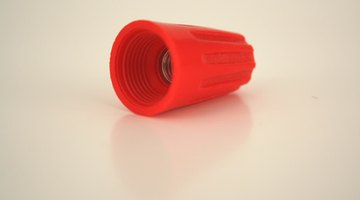How to Cap Electircal Wires in a Junction Box
Terminating electrical connections in a junction box requires a connector capable of insulating the end of each wire without coming loose. Bare copper allows electricity to flow into metal junction boxes and any metallic object connected to the junction box.

Things You Will Need
- Wire nuts
- Wire stripper
- Pliers
- Phillips screwdriver
- Junction box cover
This creates the potential for an electrical fire and a potential deadly shock to anyone contacting the energized metal. Wire nuts tighten securely to the end of a wire and have the insulating quality required to protect you and your home from the dangers of electricity.
-
Turn off the breaker supplying power to the wires housed in the junction box. Pull the wires toward the front of the junction box.
-
Remove 1/2 inch of plastic insulation from the end of each wire with wire strippers.
-
Twist multiple wires -- of the same color -- together by setting them side-by-side, aligning the ends of the wires and twisting them clockwise with pliers. Skip this step if you are capping single wires terminating in the junction box.
-
Push the open end of a wire nut on the ends of the twisted wires or single wire. Turn the wire nut clockwise until it tightens to the wire(s) and refuses to turn further. Push each capped wire into the junction box.
-
Turn the two screws located on the ends of the junction box counterclockwise with a Phillips screwdriver until you have a 1/4-inch gap between the heads of the screws and the front of the junction box.
-
Slide the straight slot located on one end of a junction box cover onto one of the loosened screws. Push the angled slot onto the body of the second screw. Turn the screws clockwise with a Phillips screwdriver to cap the junction box and protect the capped wires.
-
Turn on the breaker to supply power to the capped wires.
References
Photo Credits
- wire-nut image by Jim Mills from Fotolia.com
- wire-nut image by Jim Mills from Fotolia.com
More Articles



